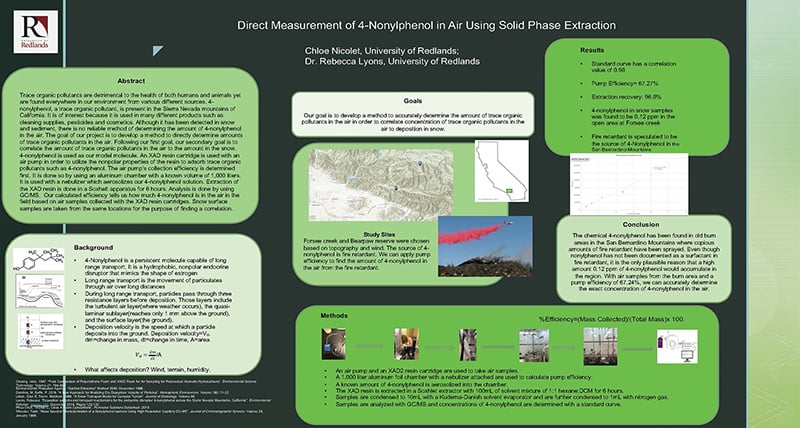Developing a Method to Directly Determine the Amount of 4-Nonylphenol in Air

Chloe Nicolet '21
Abstract
Trace organic pollutants are detrimental to the health of both humans and animals yet are found everywhere in our environment from various different sources. 4-nonylphenol, a trace organic pollutant, is present in the Sierra Nevada mountains of California. It is of interest because it is used in many different products such as cleaning supplies, pesticides and cosmetics. Although it has been detected in snow and sediment, there is no reliable method of determining the amount of 4-nonylphenol in the air. The goal of our project is to develop a method to directly determine amounts of trace organic pollutants in the air. Following our first goal, our secondary goal is to correlate the amount of trace organic pollutants in the air to the amount in the snow. 4-nonylphenol is used as our model molecule. An XAD resin cartridge is used with an air pump in order to utilize the nonpolar properties of the resin to adsorb trace organic pollutants such as 4-nonylphenol. The air pump’s collection efficiency is determined first. It is done so by using an aluminum chamber with a known volume of 1,000 liters. It is used with a nebulizer which aerosolizes our 4-nonylphenol solution. Extraction of the XAD resin is done in a Soxhelt apparatus for 6 hours. Analysis is done by using GC/MS. Our calculated efficiency tells us how much 4-nonylphenol is in the air in the field based on air samples collected with the XAD resin cartridges. Snow surface samples are taken from the same locations for the purpose of finding a correlation.


